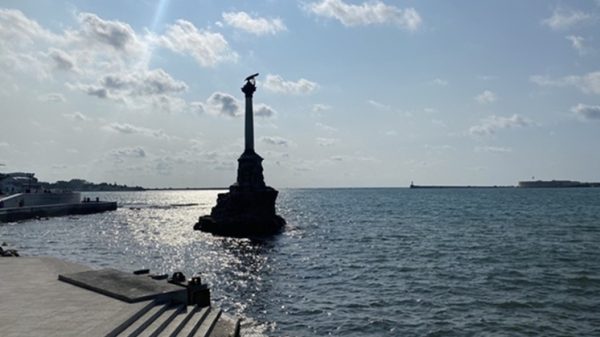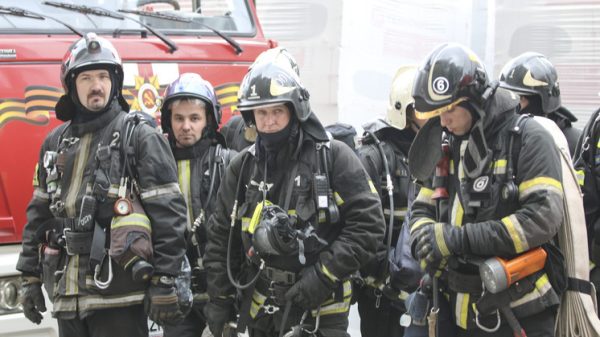So many powerful storms have formed over the Atlantic this year that for only the second time, the US National Hurricane Center (NHC) has run out of names, meaning it is now naming tropical storms and hurricanes with letters from the Greek alphabet.
There are 21 names available each year. The list ends with those beginning with W and excludes Q, U, X, Y and Z. Once that list is exhausted, the nomenclature system switches to the Greek alphabet.
A frenetic 2020 hurricane season has seen the Caribbean and southern US battered by hurricanes Hanna, Isaias, Laura and Sally. Arthur and Bertha were assigned early in the season, in May. In total, 23 named storms have formed this year, including one subtropical storm, 14 tropical storms and eight hurricanes.
On Friday, the final name assigned to the 2020 Atlantic hurricane season was used, as tropical storm Wilfred formed 600 miles west of the Cabo Verde Islands, midway between West Africa and northern Brazil, 1,500 miles or so behind tropical storm Teddy.
More big storms have sprung up. On Saturday, subtropical storm Alpha was weakening. But the Texas coast was preparing for Tropical Storm Beta, which was forecast to strengthen into a hurricane.
Beta was brewing in the Gulf of Mexico, 305 miles (495km) east-south-east of Corpus Christi, Texas, and 245 miles (395km) south of Lake Charles, Louisiana, the NH said in an advisory. The system was forecast to become a hurricane on Sunday and had triggered a tropical storm warning from Port Aransas, Texas, to High Island, Texas. Also in effect were a storm surge watch from Port Mansfield, Texas, to Cameron, Louisiana, and a tropical storm watch from south of Port Aransas to the mouth of the Rio Grande, and east of High Island to Morgan City, Louisiana.
Five cyclones churn in Atlantic Ocean for only second time in history
Read more
Beta had maximum sustained winds of 60mph (95kph) and was moving north-west at 3mph (6kph). Forecasters were predicting up to 4ft of storm surge along parts of the Texas coast. Wind, heavy rainfall and life-threatening surf and rip current conditions were also expected.
Teddy remained a powerful hurricane, with maximum sustained winds at 125mph. Teddy was centered 605 miles south-east of Bermuda, less than a week after Hurricane Paulette made landfall in the wealthy British territory.
A tropical storm warning was in effect for Bermuda. Large swells from Teddy were also expected to affect the Lesser Antilles, the Greater Antilles, the Bahamas and the US east coast.
Parts of the Alabama coast and Florida panhandle are still reeling from Sally, which roared ashore on Wednesday. At least two deaths were blamed on the system, and hundreds of thousands were still without power late on Friday.
Tropical storm Wilfred remained at sea but was not expected to affect land conditions. Tropical storm Alpha dissipated on Friday night after bringing rain to Portugal.
The Greek alphabet has been used only once before – in 2005, when 27 storms were named, including 15 hurricanes of which four, Emily, Katrina, Rita and Wilma, attained category 5 strength on the Saffir-Simpson scale.
Beta, marking the 23rd tropical storm of 2020, was named more than a month earlier than 15 years ago. Hurricane season runs from 1 June to 30 November, suggesting 2020 could reach further into the 24-letter Greek alphabet than 2005, which needed six such names.
Meteorologists say many tropical storms are forming closer to the US than usual, their elevated frequency the result of above-average sea surface temperatures and low wind shear, meaning winds in the upper and lower atmosphere are comparatively consistent.
One factor contributing to low wind shear is below-average surface temperatures in the eastern and central Pacific, a phenomenon known as La Niña, a climate pattern determined by the US National Oceanic and Atmospheric Administration (Noaa) in early September.
The US National Centers for Environmental Information has reported that August 2020 was the second-warmest August on record, that the northern hemisphere had its warmest summer, and that the globe as a whole had its third-hottest three-month spell.
The average global land and ocean surface temperature in August was 0.94C (1.69F) above the 20th-century average of 15.6C (60.1F), making it the second-hottest such month in the 141-year record, behind 2016.
After 18 September, the average hurricane season typically delivers five or six named storms, three or four of them hurricanes. In 2005, 11 storms followed Hurricane Rita – the most intense tropical cyclone on record in the Gulf of Mexico and the fourth-most intense Atlantic hurricane ever recorded.






















































Свежие комментарии